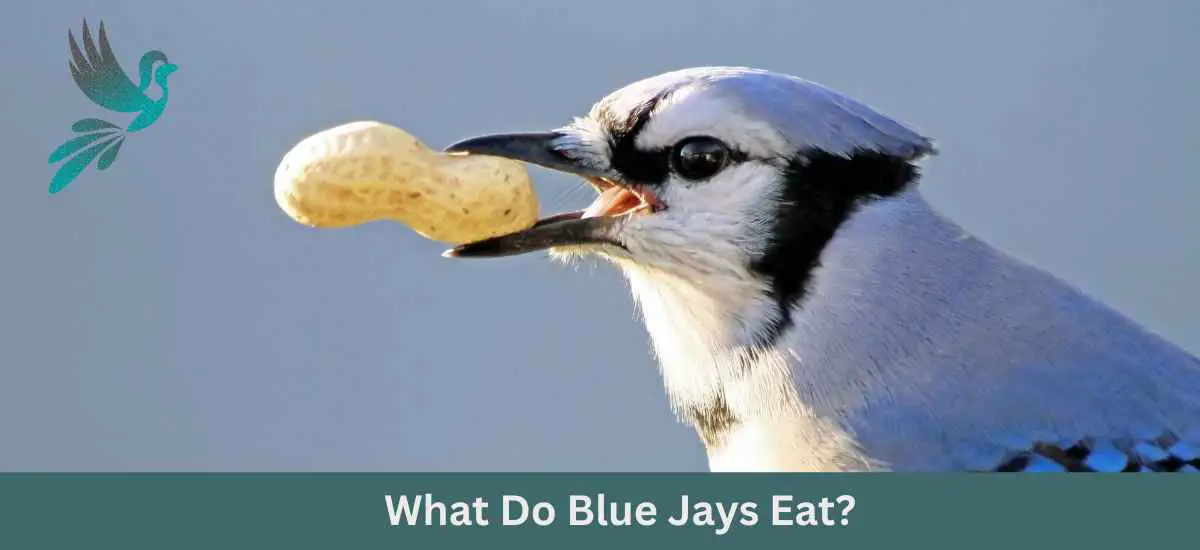Blue jays are some of the most striking and recognizable birds in North America. With their vibrant blue feathers, black markings, and distinctive calls, they are a common sight in many backyards and wooded areas.
But have you ever wondered what these beautiful birds eat to fuel their active lifestyles?
In this article, we will explore the dietary habits of blue jays, including the types of foods they consume and how they obtain them. From nuts and seeds to insects and small animals, blue jays have a varied and interesting diet that is worth exploring.
So, let’s take a closer look at what these birds eat and how they obtain the nutrients they need to thrive.
While blue jays mostly feeds on insects, it is not above preying on small mammals, reptiles, and even other birds. In terms of insect prey, caterpillars are a favorite food, but blue jays will also readily eat beetles, grasshoppers, and other invertebrates.
Spiders and snails are also part of the diet, as are birds’ eggs and carrion. In some cases, blue jays have been known to kill small mammals such as mice and baby rabbits.
Do Blue Jays Eat Apples?
Blue jays are one of the many types of birds that enjoy eating apples. If you have an apple tree in your yard, you may have noticed blue jays swooping down to take a bite out of your apples. In addition to apples, blue jays also eat a variety of other fruits, nuts, and seeds. While they typically eat these foods while they are in season, blue jays have been known to store food away for later.
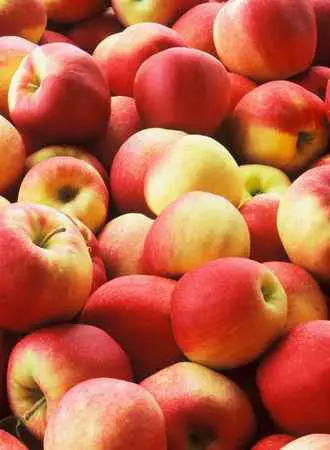
What Other Fruits Blue Jays Eat?
Blue jays are easily recognizable with their bright blue plumage. These beautiful birds are also renowned for their love of berries, and they will often eat large quantities of berries in a single day. In addition to strawberries, raspberries, blackberries, and elderberries, blue jays also enjoy eating other fruits such as cherries and grapes.
Blue jays are one of the many types of birds that enjoy eating fruits. In addition to berries and other plants, blue jays also like to eat other food types and fruits such as oranges, plums, grapes, cherries, crabapples, and prickly pear.
Each type of fruit has its own nutritional benefits that help to keep the bird healthy. For example, oranges are a good source of Vitamin C, while grapes provide antioxidants.
In addition to being a healthy food choice, blue jays also enjoy the taste of these fruits. As a result, you will see this bird snatch a small fruit and quickly flying away.
Do Blue Jays Eat Seeds?
Blue jays absolutely adore a variety of seeds, including striped sunflower seeds, black oil sunflower seeds, and safflower seeds. They are among the common foods they eat. While the reasons why blue jays eat seeds are not fully understood, it is thought that the birds may consume them for their nutritional value or to help them store food for the winter months.
Whatever the reason, there is no doubt that blue jays benefit from eating seeds. The high fat and protein content of the sunflower seeds provides the birds with essential nutrients, and the hard shells help to wear down the jays’ powerful beaks.
In addition, the act of opening and eating seeds helps to keep blue jays’ minds sharp and their coordination skills finely tuned. It is clear that seeds play an important role in the lives of blue jays.
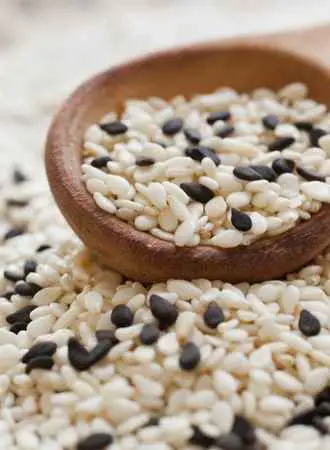
Do Blue Jays Eat Peanuts?
Blue jays find whole peanuts appealing for the same reason that humans do, they taste good. In fact, these intelligent birds are one of the few birds that can crack open a hard peanut shell. Peanuts are some of their favorite foods.
Peanuts also offer a range of nutritional benefits that are especially important for birds. One peanut is a good source of fat, which helps a blue jay maintain its body temperature, and protein, which is essential for muscle growth.
In addition, a whole peanut contains a range of vitamins and minerals, including zinc, copper, and vitamin E. All of these nutrients help to keep a blue jay healthy and strong.
Blue jays also love raw nuts. If you have a blue jay bird wandering in your garden, you can feed it a combination of raw and roasted nuts.
So next time you see a blue jay bird at your bird feeder, be sure to give them a few whole or shelled peanuts.
Do Blue Jays Eat Other Birds?
Blue jays are known for their striking blue plumage, but they are also well known for their aggressive behavior towards other birds. The majority of their varied diet consists of acorns, insects, and fruits. They also eat mice on occasion and they are not above attacking injured small vertebrates.
Despite their insect and a plant-heavy diet consisting mostly of vegetable matter and plant matter, blue jays have been known to take and eat bird eggs and baby birds of other birds. It is not clear how common this behavior is, but it likely depends on the abundance of food resources. A very small percentage of their diet comes from these sources.
When food is scarce, a blue jay may be more likely to resort to aggression toward another bird in order to ensure its own survival.
Understanding the drivers of blue jay aggression can help us to better understand the complex ecology of avian communities.
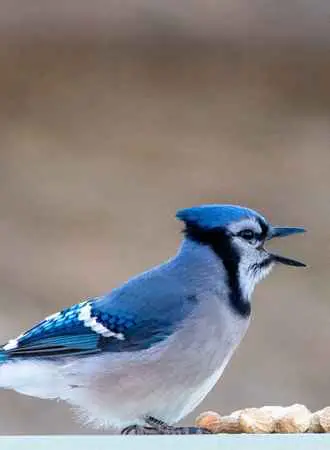
Are Blue Jays Good to Have Around?
Blue jays play an important role in the ecosystem. One of the primary ways they help is by consuming acorns and spreading oak forests. This is essential because oak trees provide food and shelter for a variety of animals, including squirrels, deer, birds, and snakes. Without these colorful birds, these animals would not have access to the resources they need to survive.
Moreover, blue jays also help to control insect populations. These North American birds are known to eat caterpillars, grubs, and other pests that damage crops and gardens. By keeping these populations in check, blue jays play a vital role in protecting the agricultural industry.
Consequently, it is clear that blue jays play a pivotal role in maintaining the balance of their ecosystem.
How Do I Attract Blue Jays to My Yard?
Blue jays are one of the most stunning backyard birds that you can attract to your backyard or garden. They are known for their brilliant blue feathers, as well as their loud calls. Fortunately, attracting blue jays is not that difficult.
Here are a few things you can do to attract blue jays to your garden or backyard:
Use Bird Feeders
If you’re lucky enough to spot a blue jay, you may want to put out a feeder to help attract them. Blue jays love to feed on platform feeders or hopper feeders. Fill your backyard feeders with the foods they love such as seeds, suet, cracked corn, corn kernels, nuts ,and other tasty treats.
Once you’ve placed feeders in your garden, it’s only a matter of time before a blue jay perched on your backyard fence becomes a common sight. Expect that your feeders will attract other wildlife such as scrub jays, northern cardinals, black-capped chickadees, and mourning doves.
Clean your bird feeders about once every two weeks if they are in use, more often during wet weather or if salmonella is prevalent in your area.
Keep squirrels and other animals away from your platform feeder or bird feeder by getting a squirrel-proof feeder pole or placing your feeder away from trees.
Provide a Consistent Source of Water
Blue jays typically eat a diet of insects and acorns, but they also need a regular supply of water. A bird bath or small fountain can be an effective way to provide a consistent source of water, and it will also give you the opportunity to watch these beautiful birds up close.
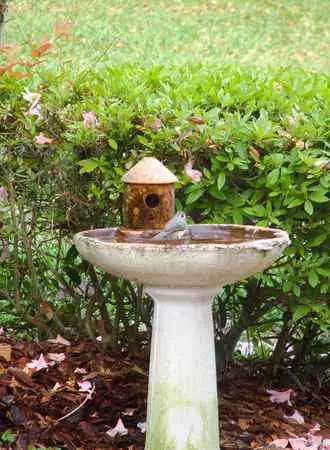
Have Nearby Tees
If you are hoping to attract blue jays to your backyard or garden, one of the best things you can do is to plant some trees. Blue jays are particularly fond of deciduous trees, such as oak and maple, as well as coniferous trees, such as fir and pine.
In addition to providing food and shelter for blue jays, these trees also offer them a perch from which they can survey their territory. If you want to attract blue jays to your yard, planting some trees is a great place to start.
Conclusion on What Does a Blue Jay Eat
So, what do blue jays eat? This question is easily answered by looking at the bird’s diet. A blue jay’s diet consists mainly of nuts, seeds, acorns, small fruits, berries, suet, and insects. While this may seem like a varied menu, most of these items can be found in or near a deciduous forest. If you’re lucky enough to live near a forested area, take some time to observe these beautiful birds and see if you can find their favorite food sources.
FAQs on Blue Jays
Where Do Blue Jays Go in the Winter Time?
As the weather starts to cool in autumn, blue jays begin to prepare for winter. Young birds will migrate south to escape the cold, while other small birds will stay put and ride out the winter in their home range.
Some evidence suggests that the birds that do migrate will typically travel in small flocks after the nesting season, following a similar route each year. The journey can be long and arduous, but it’s worth it for the chance to spend the winter in a warmer climate.
Once they reach their destination, blue jays will often congregate in open areas like fields and parks. Here they can find plenty of food to help them get through the winter months.
So, if you’re wondering where blue jays go in the winter, the answer is that they can be found all over North America, depending on the bird’s individual migration pattern.

What Trees Do Blue Jays Like to Nest In?
Blue jays build their nest site in the crotch or thick outer branches of a deciduous or coniferous tree, usually 10-25 feet above the ground. They nest in beech trees and evergreen trees such as spruce, fir, and hemlock.
The nest is a crudely constructed platform of twigs, bark strips, leaves, moss, pine needles, rootlets, paper, string, cloth, and feathers lined with more soft materials such as hair, grasses, rootlets, and moss.
Both parents help gather materials and build the nest for their eggs. It takes about 18 days to construct the nest.

